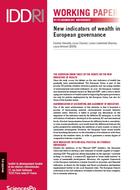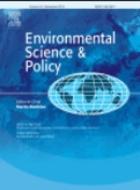Cet article écrit par M. Grubb (Institute for Sustainable Resources, University College London), F. Sha (National Center for Climate Change Strategy and International Cooperation), T. Spencer (Iddri), N. Hughes (Institute for Sustainable Resources), Z. Zhang (Tianjin University) et P. Agnolucci (Institute for Sustainable Resources), publié dans le Vol. 15, No. S1, S7–S39 de la revue Climate Policy, anayse les interactions entre les trajectoires macro-économique et énergétique de la Chine à l'horizon 2030.
Résumé [en anglais] :
"The projections of 89 scenarios from 12 different models for the CO2 emissions of China to 2030 are reviewed, along with wider examinations of lessons from the history of energy forecasting in OECD countries, and of the Chinese macroeconomic situation.
Even by 2030, emissions in the scenarios span a factor of almost 2.5, indicating significant range and uncertainty. Statistical analysis of Kaya components suggests the carbon intensity of energy supply to be the strongest determining factor. However, most scenarios assume that industry1 continues to account for more than 50% of total final energy demand. This is in contrast both to historical examples, which have consistently shown economies shifting from energy-intensive industrial bases to servicebased structures as income per capita rises, and to recent Chinese policy statements, which reflect a similar ambition. It is also highly salient that major failures in energy and emissions projections can frequently be accounted for in retrospect by failures to anticipate such major economic structural shifts.
In conclusion, while the future trajectory of Chinese emissions remains profoundly uncertain, the potential for a significant Chinese macroeconomic transition and its implications for the scale and structure of energy demand will be a crucial factor, to which energy-climate models must pay far more attention."





